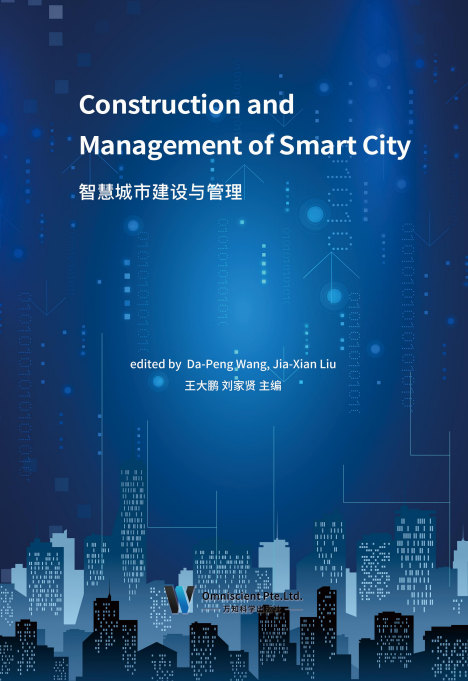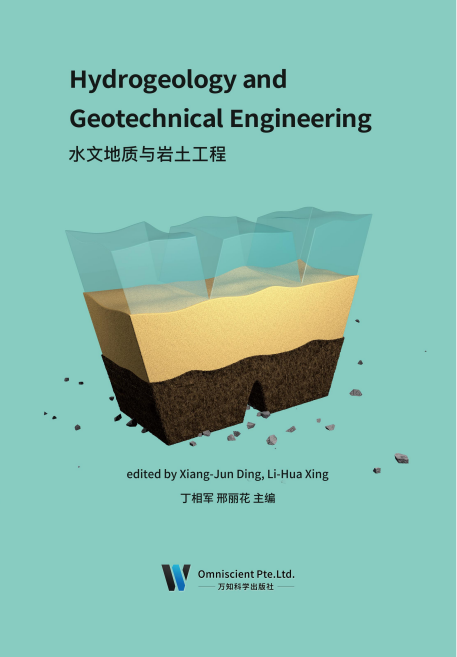
Looking at the economic growth of developed countries in the 20th century, we can draw a conclusion that without innovation, there will be no economic development, no social progress, and it is impossible to improve the survival and development ability of enterprises. Today’s top 500 companies almost all rely on enterprise innovation to grow up gradually. With the development of science and technology and the arrival of the new economic era, enterprise innovation has changed from passivity and contingency to initiative and inevitability. Human beings have never been so devoted to the pursuit of innovation, and enterprises are more aware that innovation has become the soul that determines the survival and development of enterprises. What’s more, medium-sized and small enterprises are not only an important and active force in economic development, but also an important source of power for economic growth with their vigorous innovation activities. Therefore, it is more important to study the innovation of medium-sized and small enterprises for promoting the healthy development of medium-sized and small enterprises in China.
The development of enterprise innovation theory is a gradual process. In different development periods and different economic development stages, the innovation methods are often different. Therefore, this book analyzes the theory of enterprise innovation and its background and historical conditions, and puts forward the future development trend of enterprise innovation in the new economic situation.
Modern enterprise innovation practice shows that enterprise innovation is not a single technological innovation, but a comprehensive system engineering. Therefore, this book introduces the technological innovation, product innovation, market innovation, service innovation, organization innovation, management innovation and culture innovation of enterprises, and tries to summarize the rules from them, so as to provide innovation programs for small and medium-sized enterprises.
In the process of innovation, in addition to relying on market regulation, enterprises also need the government to provide necessary guidance and support. This book introduces the role of government in enterprise innovation and the principles, contents and methods of providing support.
Because it is relatively late for China to attach importance to small and medium-sized enterprises, and lags far behind the developed countries in the construction of innovation system, and now faces the challenge of new economy, how to realize and control the innovation of small and medium-sized enterprises in our country has become the primary problem. This book introduces the current situation and existing problems of innovation of small and medium-sized enterprises in China, and explores the ways of innovation of small and medium-sized enterprises in China.
In the process of planning and compiling this book, we have referred to a large number of domestic and foreign documents and materials, from which we can get inspiration; at the same time, we have also received the support and help from leaders, colleagues, friends and students. We would like to express our heartfelt thanks to you! Due to the rapid development of network information security technology, there are still some unsatisfactory aspects in the selection and compilation of this book. In addition, due to the limited knowledge level and time of the editor, there are inevitably shortcomings and errors in the book. We hope that the experts and readers of the same trade can correct it so as to further improve it.
前 言
纵观 20 世纪世界各发达国家的经济增长, 可以得出这样一个结论, 即没有创新就没有经济发展,就没有社会进步,就不可能提高企业的生存与发展能力。当今世界 500 强的大企业,几乎都是依靠企业创新从小企业逐渐成长起来的。随着科学技术的发展和新经济时代的到来, 企业创新已由过去的被动性、 偶然性走向了主动性、必然性。人类从来没有像今天这样致力于追求创新,企业也从来没有像现在这样认识到创新已成为决定企业生存与发展的灵魂。更值得一提的是,中小企业不仅是经济发展的一只重要而活跃的力量,而且以其富有生机的创新活动,为经济增长提供了重要的动力源泉。因此,深入研究中小企业创新问题对于促进我国中小企业健康发展更具有重要的现实意义。
企业创新理论的发展是一个渐进的过程,在不同的发展时期、经济不同的发展阶段,往往采取的创新方法也不同,因此,分析了企业创新理论及其产生的背景和历史条件,并提出在新的经济形势下,企业创新的未来发展趋势。
现代企业创新实践表明,企业创新已经不是单一的技术创新,而是一项综合的系统工程。所以,介绍了企业的技术创新、产品创新、市场创新、服务创新、组织创新、管理创新和企业文化创新等有关内容,力求从中总结出规律,为中小企业提供创新方案。
企业在创新的过程中,除了依靠市场的调节之外,还需要政府提供必要的引导和支持。介绍了政府在企业创新中的作用以及提供支持的原则、内容和方法。
由于我国重视中小企业工作比较晚,尤其是在创新体系建设上还远落后于发达国家,当今时代又面临着人世的新经济的挑战,我国中小企业如何实现并驾驭企业创新已成为首要问题。介绍了我国中小企业创新的现状及存在的问题,探索我国中小企业创新的途径。
在本书的策划和编写过程中,曾参阅了国内外有关的大量文献和资料,从其中得到启示;同时也得到了有关领导、同事、朋友及学生的大力支持与帮助。在此致以衷心的感谢!由于网络信息安全的技术发展非常快, 本书的选材和编写还有一些不尽如人意的地方,加上编者学识水平和时间所限,书中难免存在缺点和谬误,敬请同行专家及读者指正,以便进一步完善提高。

With the development of information technology, the level of science and technology in our country has made rapid progress, and people’s life style has also changed a lot.Computer technology, network technology, communication technology, sensor technology, artificial intelligence technology, VR technology and many other kinds of science and technology in the information age have been integrated into people’s daily life. The Internet has become the most important way of information dissemination in today’s society. In order to meet the needs of people’s daily life and work, and facilitate the management and development of the city, China put forward the development requirements of smart city construction in 2011. The construction of smart city is directly related to the level of economic and technological development. Generally speaking, the higher the content of science and technology is, and the more developed the economy is, the earlier countries conceive smart city. Therefore, compared with the world, the construction of smart city in China is still in a relatively short time.
The purpose of the city is to provide sustainable prosperity for its citizens. The city stands at the top of the new century, new rights, new responsibilities, new economy, newpolitics and new technology. In the sustainable development of cities, human beings are facing major challenges and threats. The city must use new technology to transform the core system into an intelligent system and make the most of the limited resources.
Many cities around the world have begun to seize this opportunity. To grasp the pulse of the development of the times and realize the goal of sustainable and prosperous development of the city, we must combine the new technological revolution with the trend of urbanization development, and urgently need to find a comprehensive solution that follows the objective law of urban development. In this case, smart city becomes our inevitable choice and the only way for the future development of the city.
前 言
在信息化发展的今天,我国的科学技术水平有了飞速的进步,人民的生活方式也产生了很大的改变,计算机技术、网络技术、通信技术、传感技术、人工智能技术、 VR 技术等众多信息化时代下的科学技术已经融入人民的日常生活当中,互联网也成为当今社会中最重要的信息传播方式, 为了满足人民日常生活和工作的需求,便于城市的管理和发展, 我国在 2011 年提出了智慧城市建设的发展要求。 智慧城市的建设与经济、科技发展程度有直接联系,通常来讲,科技含量越高、经济越发达的国家对智慧城市构思越早。因此,和世界范围相比较,我国智慧城市的构建仍处于一种兴起时间比较短的事物。
城市的目的是为市民提供可持续繁荣。城市站在新世纪、新权利、新责任、新经济、新政治和新技术的顶尖。在城市的可持续发展上,正面临重大的挑战和威胁。城市必须使用新技术将核心系统转型到智能化系统,最大限度地利用有限的资源。
世界各地许多城市已经开始抓住这个机会。把握时代发展的脉搏,实现城市的可持续繁荣发展目标,就必须让新技术革命和城市化发展趋势相结合,就迫切需要找出一条遵循城市发展客观规律的综合解决之道。在此情形下,智慧城市成为我们的必然选择,也是城市未来发展的必由之路。

This book is a relatively systematic and comprehensive English course and teaching theory textbook or compilation compiled according to the concept of Curriculum Standard for Teacher Education (Trial). The features of this book are as follows: The first one is the combination of the concept and spirit of Curriculum Standard for Teacher Education (Trial) and English Curriculum Standard (Revised Version); second, it not only reflects the latest development results of the English discipline and its related disciplines, but also devotes itself to combing and presenting the traditional discipline theory; third, it combines the practicality and theory, especially reveals the law of education and teaching of English course as a practical subject, and provide a large number of practical cases for
users to refer to.
This book can be divided into two parts from the content, the first part is mainly about theoretical knowledge, including language and language teaching concept, modern language teaching concept, mother tongue and second language acquisition concept, etc. The second part is mainly about practice. This book analyzes and studies modern English teaching methods and curriculum development methods. Consciousness plays a very important role in guiding behavior. Therefore, establishing a scientific concept of English teaching can play a positive role in promoting the follow-up teaching behavior and lay a solid foundation for the cultivation of high-quality talents. At the same time, all theories and concepts need to be put into practice, and their connotations need to be gradually implemented from practice. The idea of this book is to combine theory with practice, “two hands grasp, two hands hard”. This book strives to provide effective reference for modern English teaching.
前 言
本书是一本按照《教师教育课程标准(试行)》的理念编写的比较系统的、全面的英语课程和教学论教材或编著。本书的特色为:一是《教师教育课程标准(试行)》和英语课程标准(修订稿)的理念和精神相结合;二是既反映英语学科及其相关学科的最新发展成果,也致力于梳理和呈现传统的学科理论;三是实践性和理论性相结合,特别揭示作为一门实践性较强的英语课程的教育教学规律,并提供大量的实践案例供使用者参考。
本书从内容上可分为两大部分,其中,第一部分主要为理论知识篇,包含语言与语言教学观念、现代语言教学观、母语及二语习得观等;第二部分主要为实践篇,针对现代英语教学方式与课程开展方式展开分析与研究。意识对行为具有非常重要的指导作用,因此,树立科学的英语教学观念,能够对后续的教学行为产生积极的推动作用,可为高素质人才的培养打下坚实基础;同时所有理论和观念都需要付诸实践, 从实践中逐步落实其中内涵。 本书撰写的理念便是将理论与实际相结合, “两手抓,两手硬”,力求为现代英语课程教学提供有效的参考。

Library informatization refers to the use of modern information technology, in accordance with the requirements of the information society, the organization,development and management of library information resources, to provide quality information services for library users. Specifically speaking, it is the digitalization of information storage, the networking of transmission means, the intellectualization of management and control, and the informatization of personnel quality. The public library is an important place for the permanent preservation of human cultural heritage. It is also a knowledge palace for citizens to study for life, popularize scientific and cultural knowledge, and improve citizens’ quality. But at present, most of the grass-roots public libraries are still based on the traditional service methods and service means. Its various limitations and backwardness, in the highly developed information today, are far from meeting the urgent needs of people for information knowledge, which requires us to increase the strength of the grass-roots public library information construction. The informatization construction of grass-roots public library is the need of accelerating the network of public library, realizing resource sharing, deepening information service and further promoting the development of public library. Applying computer technology and network technology to the library will improve the work of the library as a whole, provide more advanced services for the readers at the grass-roots level, and greatly promote the improvement of the public quality. At the same time, with the continuous increase of the national investment in cultural undertakings and the full implementation of the national cultural information resource sharing project, it provides a strong impetus for the traditional public library to move forward to the digital library. Therefore, the information construction is imperative no matter from the construction of the public cultural service system or the development needs of the grass-roots public library itself.
This book mainly starts from the basic concept of the library, through the characteristics of the library, the development and application of management, as well as the combination of informatization and library management, and continuously strengthens the innovative research on library management informatization, so as to better improve the efficiency of the whole library management and provide better services for readers.
前 言
图书馆信息化是指利用现代信息技术,按照信息社会的要求,组织、开发和管理图书馆各项信息资源,为图书馆用户提供优质信息服务。具体说来就是信息储存数字化、传输手段网络化、管理控制智能化和人员素质信息化。公共图书馆是永久保存人类文化遗产的重要场所,是公民终身学习,普及科学文化知识,提高公民素质的知识殿堂。但是目前多数基层公共图书馆仍然以传统的服务方式和服务手段为主,它的各种局限性与落后性,在信息高度发达的今天已远远不能满足人们对信息知识的迫切需求,这就要求我们必须加大基层公共图书馆信息化建设的力度。基层公共图书馆信息化建设是加速公共图书馆网络化、实现资源共享、深化信息服务、进一步促进公共图书馆事业向前发展的需要。将计算机技术、网络技术广泛运用于
图书馆,将从整体上改善图书馆工作,并能为基层读者提供更先进的服务,对公众素质的提高可以起到很大的促进作用。同时,随着国家对文化事业投入的不断增加和全国文化信息资源共享工程的全面实施,为传统公共图书馆向数字化图书馆迈进提供了强劲的动力,因此无论是从公共文化服务体系建设,还是基层公共图书馆自身发展需要,信息化建设都势在必行。
本书主要是从图书馆的基本概念入手,通过对于图书馆的特点、管理的发展与应用,以及将信息化与图书馆管理相结合,不断加强对于图书馆管理信息化的创新研究,从而更好地提高整个图书馆管理的效率,更好地为读者提供服务。

In recent years, with the development of national economy, the scale and difficulty of construction projects are increasing, and the research of hydrogeology and geotechnical engineering is facing new development and challenges. The earth’s crust, surface of the earth, is not only the place where human beings live, but also the geological environment of all kinds of engineering buildings. The construction of highways, railway underpasses, reservoirs, bridges and culverts, civil buildings and other engineering activities are closely related to the engineering geological and hydrogeological conditions. All kinds of geological and hydrological environment and engineering buildings must be interrelated and restricted by each other. It is of great significance to study the engineering geological and hydrogeological conditions of buildings in every stage of design, construction and use. Human engineering activities and natural geological processes will change the geological environment and affect the change of engineering geological conditions. When the engineering geological conditions can not meet the stability and safety requirements of engineering buildings, that is, there is a contradiction between the engineering geological conditions and the requirements of engineering buildings, it is called the existence of engineering geological problems. Solving engineering geological problems is also the main content of geotechnical engineering construction.
The in-depth study of hydrogeology is an important link to ensure the smooth construction of the whole geotechnical engineering, which is of great significance. We should not only consider the relationship between rock and soil and water quality, but also budget and propose the corresponding prognosis and treatment plan to ensure the effective reduction of hydrogeological impact on geotechnical engineering. Due to the limited experience of the editor, there are inevitably some shortcomings and even mistakes in the book, so we sincerely ask the readers to criticize and correct them.
前 言
近年来,随着国民经济的发展,建设工程的规模和难度都在加大,水文地质和岩土工程研究迎来了新的发展和挑战。 地球表层、 地壳是人类赖以生存的活动场所,也是各类工程建筑的地质环境。修建公路、铁路地下通道、水库、桥涵和民用建筑等工程活动,都与工程地质和水文地质条件密切相关。各种地质和水文环境与工程建筑物之间必然相互关联和制约, 研究建筑物的工程地质和水文地质条件, 对设计、施工和使用等各个阶段都具有重要的意义。人类的工程活动和自然地质作用会改变地质环境,影响工程地质条件的变化。当工程地质条件不能满足工程建筑的稳定、安全要求时,也就是工程地质条件和工程建筑要求之间存在矛盾时,就称为存在工程地质问题。解决工程地质问题也是岩土工程施工的主要内容。
对水文地质进行深入的研究是保障整个岩土工程顺利施工的重要环节,具有十分重要的意义,我们在对其进行勘测时,不仅要考虑岩土与水质之间的关系,还应预算并提出相应的预后及处理方案, 以保证有效的减少水文地质对岩土工程的影响。由于编者经验有限,书中难免存在一些缺点甚至错误,恳请读者批评指正。